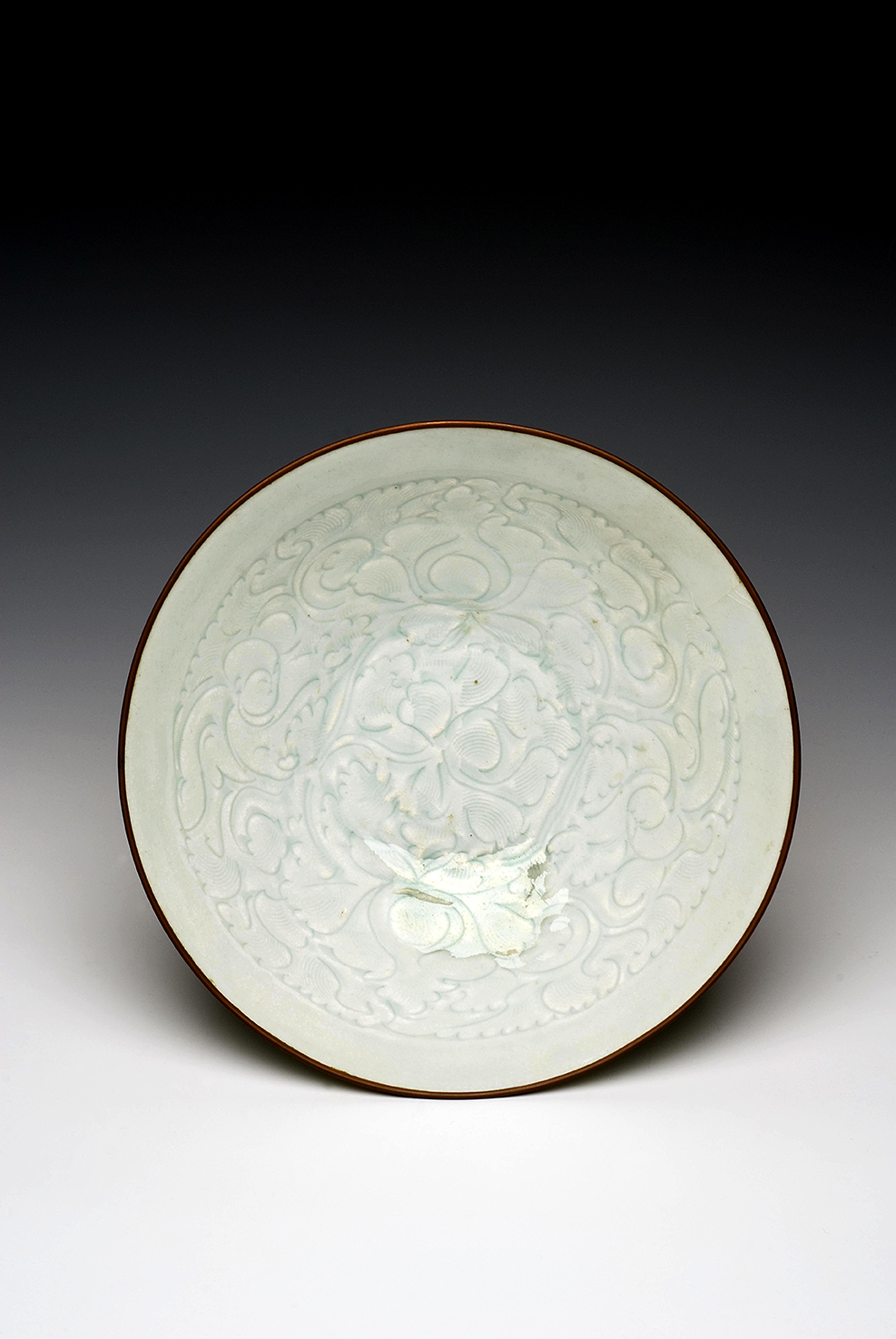Bowl
| Object Title | Bowl |
| Origin | China |
| Date | Southern Song dynasty, 1127–1279 |
| Material | Porcelain and copper |
| Dimensions | diameter 20.5 cm |
| Collection | University Museum and Art Gallery, HKU |
| Accession No. | HKU.C.2009.1810 |
Qingbai wares were first produced in the early Northern Song dynasty (960–1127) at kilns in Jingdezhen, China, which at the time were successfully manufacturing celadon wares for the local market. Their icy blue-green tinge was produced by applying a glaze with small amounts of iron to a fine porcelain stone and kaolin clay body, which was fired in an oxygen deprived atmosphere.
They were often fired upside down in the kiln, which saved space by allowing for everted vessels to be stacked in a pile, and was essential for mass produced utilitarian and export wares. It also helped to evenly spread the weight of each vessel around the rim, preventing deformation and allowing for more thinly potted bodies. Vessels fired in this way had to be wiped free of glaze on the rim to prevent them from becoming stuck to the kiln floor, resulting in a rough, unfinished appearance. To avoid this, potters sometimes covered the unglazed area with copper or silver rims.
